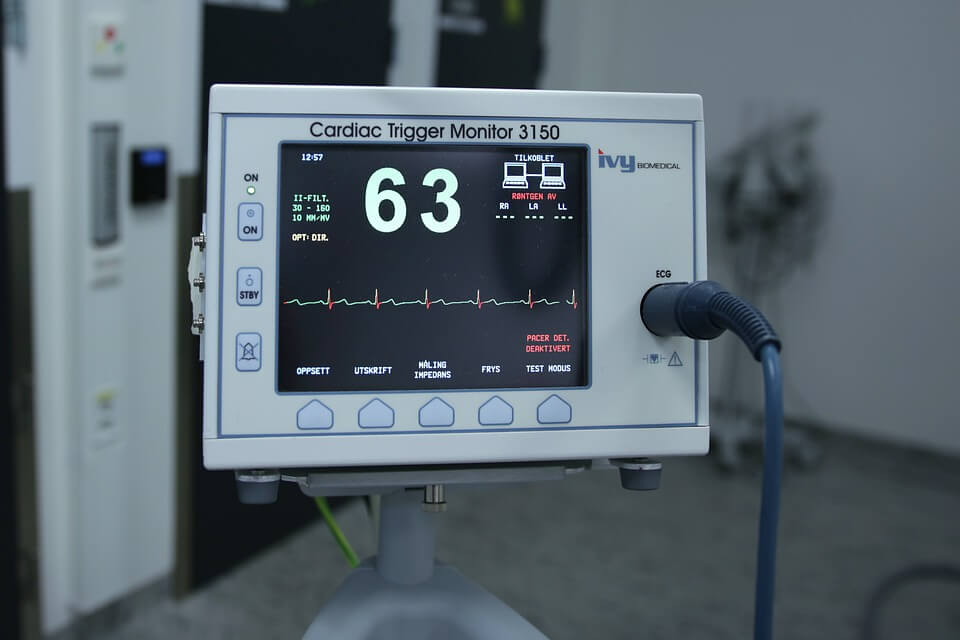COPD: URBAN DWELLERS AT RISK OF LUNG DISEASES –Expert
What is chronic obstructive pulmonary disease?
Chronic obstructive pulmonary disease (commonly known as COPD) is a common preventable and treatable disease. It is characterised by persistent breathing trouble caused by difficulty with air movement through the smaller airways in the lung. Over time, this will result in permanent changes in the smaller airways of the lung (as seen in chronic bronchitis and persistent asthma) and damages to the lung tissues (as seen in emphysema). COPD is the fourth leading cause of death worldwide. The number of people living with COPD in Nigeria and Africa in general is unknown due to under-reporting and the lack of national health registries.
What are the different causes?
COPD is the result of prolonged exposure to harmful gases and particles, combined with our body’s reaction to protect itself. The risk of getting COPD is related to the following factors: tobacco smoking, indoor air pollution, occupational exposure, outdoor air pollution, genetics, low birth weight and prematurity. Cigarette smoking is the most important risk factor to develop COPD. The amount and duration of smoking contribute to COPD severity. Other types of tobacco exposure, such as smoking pipe, cigar, water pipe, and marijuana, as well as second-hand smoking, also increase your risk of developing COPD. Tobacco smoking is the leading cause of COPD. Over time, this will cause constant irritation and damage to the air sac, airways, and lung tissue lining. Consequently, this will result in changes in your lung, more sputum production, and difficulty in airflow, making it hard to breathe. Burning of wood and other biomass fuels used for cooking and heating in poorly ventilated areas is a big risk factor for COPD affecting women in Nigeria and other developing countries. Although these women may not have smoked a day in their life, they have a significant risk of developing COPD due to the amount of time they spend cooking with woods in poorly ventilated areas.
Occupational exposure affects industrial workers that are constantly exposed to different toxic dusts, chemicals and fumes. As Nigeria and other parts of the world become more industrialised, the risk of developing COPD increases due to air pollution. This is of importance to people living in major cities like Lagos, Port Harcourt, Warri, Onitsha, and many others. Factory workers can be at risk of developing COPD, depending on the safety of their work environment. The nature of dust particles, chemicals, fumes, and gases they are exposed to can determine if they will develop COPD and other lung diseases. Some of these dust and gases can cause chronic irritation and changes in air passages and lung tissues. Some people can develop COPD because of bad genes (such as alpha-1-antitrypsin deficiency). This is commonly seen in people developing COPD at younger ages. Furthermore, a history of recurrent severe childhood lung infection has been associated with the development of COPD during adulthood. On low birth weight and prematurity, children that are born premature or those that are underweight may have increased risk of developing COPD. This is primarily due to the fact that lung growth happens towards the last few weeks of pregnancy.
What are the symptoms of the disease?
The basic symptoms associated with COPD include shortness of breath, chronic cough, and sputum (mucus) production. Other common symptoms are wheezing, chest tightness, and difficulty breathing during routine activity. These symptoms are generally worse in the morning and during exercise.
Is it prevalent among some categories of people or age bracket?
In general, COPD occurs after decades of recurrent toxic inhalation of gases and dusts. It is more common in females and people older than 40 years of age.
When should a person with these symptoms see a doctor?
For someone with a risk factor for COPD, you should consider talking to your doctor if you start having worsening shortness of breath, persistent cough, increased mucus or sputum production, wheezing, chest tightness, recurrent pneumonia, or coughing up of blood.
How is COPD diagnosed?
With the right clinical context, COPD is diagnosed using a breathing test called spirometry. In more advanced hospitals, a complete pulmonary function test may be performed to get a full picture of your lung condition. Your doctor may also do a chest X-ray, blood test, and or CT (computer tomographic) scan to rule out other diseases that may behave like COPD.
Some people experience shortness of breath during exercises. Can this be easily connected to COPD?
Shortness of breath during exercise can be caused by many different problems, such as heart trouble, asthma, allergies, lung infection, poor physical condition, and, of course, COPD. The hallmark of COPD is that it is a chronic disease. Most people with COPD have shortness of breath, cough, and sputum production going on for months to years prior to their diagnosis.
What are the complications that can result from COPD?
Due to decrease in blood oxygen level and high carbon dioxide level seen in people with COPD, they are in general at higher risk of developing several complications. Some of these complications include recurrent lung infection (causing COPD symptom exacerbation), respiratory failure, lung cancer, osteoporosis, sleep disturbances, anxiety, depression, heart diseases, memory loss, and many others. Respiratory failure during an acute COPD exacerbation is the most dangerous, especially in Nigeria where access to medical treatment (such as supplemental oxygen, if needed; antibiotics; steroids; and mechanical ventilator, if needed) may not be readily available.
Can COVID-19 have a long-term adverse effect on the lungs of a survivor?
At the end of 2019, COVID-19 made its way onto the global stage due to its rapid human-to-human transmission and its ability to cause death, secondary to respiratory failure. COVID-19 causes a variety of respiratory diseases, ranging from the mild common cold (such as cough, fever, shortness of breath, ‘stomach distress,’ loss of taste and smell) to respiratory failure. Suspicions for COVID-19 infection are raised in those who have recently travelled to high-risk areas or have had close contact with a confirmed or suspected case of COVID-19. Since COVID-19 is relatively a new infection, its long-term effects are unclear. People with COVID-19 infection have varying degrees of lung damage, as seen in their chest X-rays. Depending on the degree of the lung damage, some of them may return to normal, while others will have chronic lung damage. Treatment for COVID-19 is still evolving. There are so many medications and vaccinations for COVID-19 that are currently under clinical trial. Depending on the part of the world where you are, different medications may be used for COVID-19 treatment, based on the available resources. When COVID-19 is suspected, early diagnosis is important to avoid complications and easy spread of the infection.
Is the COPD preventable?
COPD is preventable. The key to COPD prevention is behaviour and environmental modification. Smoking cessation is the key. Stopping smoking (including second-hand smoking and marijuana) can significantly lower your risk of developing COPD. Living in cities with clean air, use of proper protective equipment (if working in a factory with high pollution), and cooking in properly ventilated space are some things that can lower the risk of developing COPD. Except in rare cases when lung transplant is performed, COPD is not curable but treatable.
How can it be treated?
After diagnosis, COPD can be treated. The goal of treatment is generally to reduce symptoms, decrease frequency of attacks (COPD exacerbation), improve health status and exercise tolerance. COPD treatment must be individualised and guided by the severity of COPD symptoms, risk of exacerbation, medication side effects, drug availability and cost, and other medical conditions the person may have. Inhalers (such as albuterol, salmeterol, ipratropium, umeclidinium, fluticasone, or a combination of similar medications) are generally the cornerstone for COPD maintenance treatment. In severe cases, oral steroid and supplemental oxygen therapy, if available, may be necessary. It is important that these treatments be guided by an experienced physician. Self-medication can be more harmful than the actual disease.
-Kenneth Iwuji
@ Alexander Okere
@ Punch Newspaper

